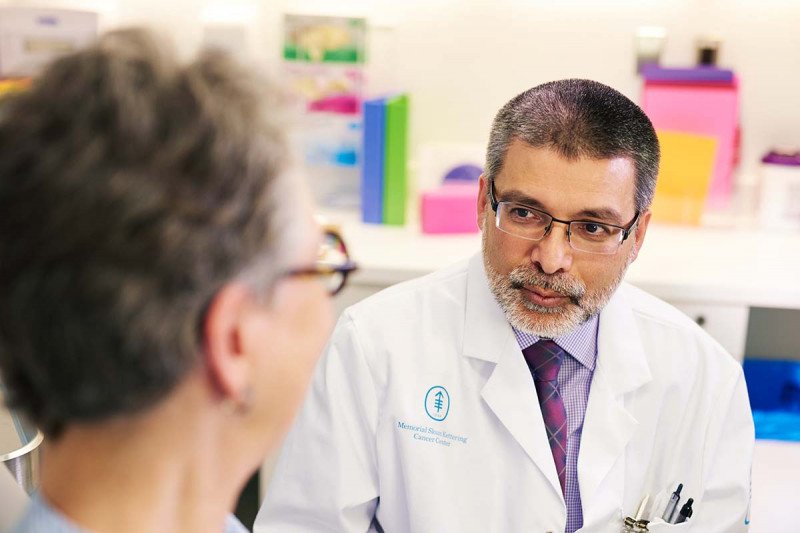
Most cases of squamous cell carcinoma can be cured when found early and treated properly. Today, many treatment options are available, and most are easily performed at a doctor’s office.
Which treatment approach is best for you will depend on such things as whether the squamous cell skin cancer is high risk or low risk, and your age, general health, medical history, and personal preferences.
It’s important not to delay treatment for too long, since this can make the cancer more difficult to cure. Waiting to treat squamous cell skin cancer also increases the risk of hurting your appearance and leading to difficulties with using that part of the body normally if a lot of surgery or other treatment is needed.
Treatment for Precancerous Skin Changes
While most skin cancer arises as a brand new spot, some squamous cell carcinoma develops from a precancer called actinic keratosis, or solar keratosis (usually a rough, flat, pink spot on the skin, which may become firm and raised above the normal skin surface if it becomes cancerous).
For people with this precancerous condition, we offer photodynamic therapy. The procedure involves applying a special chemical to the skin and then exposing the area to a certain wavelength of light. The light causes the chemical to release reactive oxygen molecules, which destroy the precancerous cells.
Another option for small, low-risk lesions is topical chemotherapy. With this approach, we target damaged skin without touching surrounding normal tissue. Two common topical chemotherapies are:
- Fluorouracil (5-FU); you apply this cream or lotion at home for three to six weeks. Your skin may become irritated and red during treatment with 5-FU.
- Imiquimod; you apply this topical lotion at home; it causes local immune cells to attack abnormal tissue and may be used to treat actinic keratosis.
Because topical chemotherapy does not kill cells under the surface of the skin, close follow-up is essential.
Squamous Cell Skin Cancer Treatment
At Memorial Sloan Kettering, our experts treat squamous cell skin cancer with surgery, radiation therapy, or topical chemotherapy in some cases.
Surgery
Surgery is often recommended to remove squamous cell lesions, particularly those classified as high risk. Surgical removal involves injecting a local anesthetic and removing the tumor from the skin along with a “safety margin” to ensure that all of the cancer cells have been removed. The wound is then closed with stitches. .
MSK physicians who treat squamous cell carcinoma and other skin cancers include dermatologists, Mohs surgeons, radiation oncologists, and medical oncologists.
Surgery is most effective for tumors with well-defined borders and can be performed virtually anywhere on the body. An advantage of surgery is that the tissue can be sent to a laboratory for microscopic evaluation by a pathologist, who will verify whether the entire tumor has been removed along with enough space between the cancerous and noncancerous tissue.
Any form of surgery can leave a scar, some more noticeable than others. As a comprehensive cancer center, MSK has reconstructive surgeons skilled in using skin grafts, flaps, and other procedures to help make the area look as normal as possible.
Mohs surgery has the highest cure rate of all therapies for squamous cell carcinomas. It is particularly effective for high-risk squamous cell carcinomas, such as large, deep tumors; tumors that have recurred after other treatments; and tumors in areas, such as the face, that require as much preservation of normal skin as possible.
The approach involves a surgeon removing skin tissue layer by layer, mapping and freezing each layer, and examining the tissue for tumor cells under a microscope before proceeding to the next layer. It’s complicated and time-consuming, but it ensures that the entire tumor is removed. Another advantage is that it minimizes scarring by preserving as much normal skin as possible.
This very common treatment for squamous cell carcinoma is most effective for low-risk tumors. After numbing the area with a local anesthetic, the surgeon uses a semisharp instrument with a spoon-shaped edge (called a curette) to scrape away the cancerous tissue. The area is then treated with an electric needle to control bleeding and destroy any cancer cells that may remain around the edge of the wound. The wound usually heals within a few weeks.
This treatment involves applying liquid nitrogen to freeze the abnormal tissue, which then sloughs off as the underlying skin heals.
With this approach, we vaporize tumor tissue with a highly focused beam of light. Because laser surgery kills tumor cells only on the surface of the skin, its use is limited and close follow-up is essential.
Radiation Therapy
Radiation therapy with x-rays or high-energy particles can be useful for treating tumors in areas that are difficult to treat with surgery, or in older people and others at a higher risk for complications with surgery.
Sometimes we recommend radiation after surgery to destroy tumor cells that may have been missed, or to treat tumors with a higher risk of coming back. We usually deliver radiation in small doses over a period of three to four weeks to avoid burning the skin, and to improve the cosmetic outcome.
Electronic Skin Surface Brachytherapy (ESSB)
Some skin cancers that do not require very deep radiation may be treated with a new form of radiation therapy applied directly to the skin, called electronic skin surface brachytherapy (ESSB).
In ESSB, we apply smooth, round disks to the skin; these disks are attached to a radiation therapy machine. They are left in place for just a few minutes while the radiation is delivered, allowing the tumor to be treated. The approach spares underlying healthy skin from the effects of the radiation.
We’re available 24 hours a day, 7 days a week



